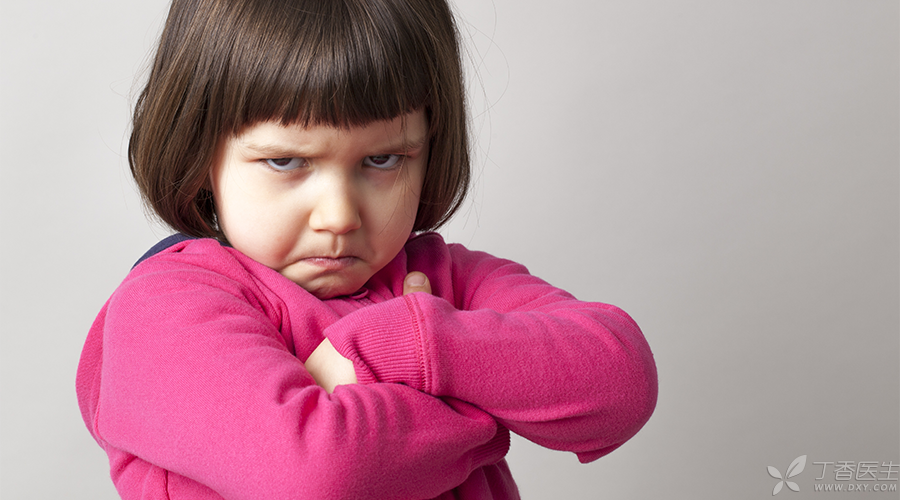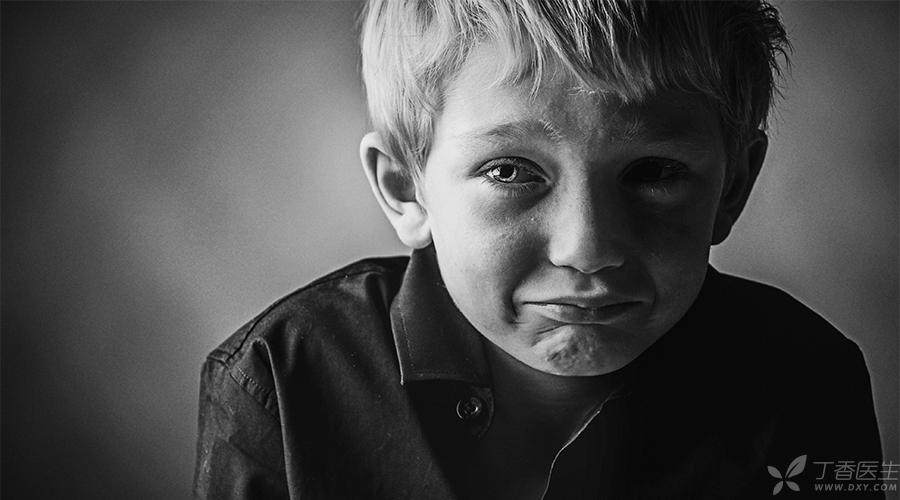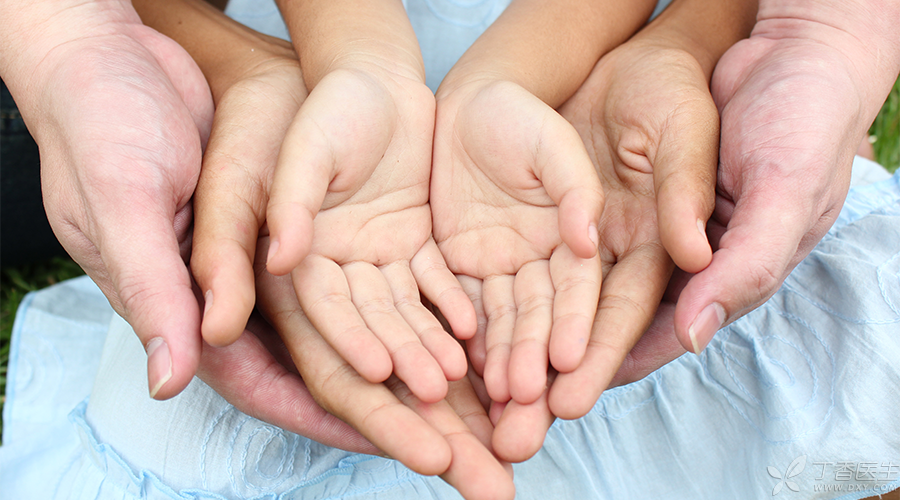
Do you have such children around you:
Lively and active, jumping up and down, not quiet all day long;
Or immersed in their own world every day, do not like to talk, do not communicate with people;
Or violent behavior, vulgar words, aggressive, although parents and teachers have struggled [the power of the universe] are still out of control.
Do you know that in fact you think [naughty] children may suffer from attention deficit/hyperactivity disorder?
Do you know, in fact, do you think [clever and introverted] children may suffer from autism spectrum disorder?
Do you know that in fact you think [uneducated] children may suffer from conduct disorders?
People often only pay attention to children’s physical diseases, but often ignore children’s mental health. Children’s mental health is also extremely important to children’s healthy growth. It is necessary for us to talk about children’s mental and psychological problems.
The incidence of mental illness in children is gradually increasing.
According to the 2015 China Statistical Yearbook, by the end of 2014, China had more than 220 million children under the age of 14, accounting for 16.5% of the total population.
Children’s physical and mental health is a problem worthy of attention. With the development of social economy, the progress of science and technology and the improvement of medical level in our country, the disease spectrum of children has undergone obvious changes in recent years.
Through the implementation of the national disease prevention work, The incidence rate of once common infectious diseases among children has decreased significantly, and the incidence rate of other common diseases among children, such as respiratory tract infection, diarrhea and nutritional deficiency diseases, has also gradually decreased. Apart from biological factors, the influence of social factors and psychological factors is gradually expanding.
The importance of children’s mental health cannot be ignored.

The World Health Organization defines health as: [Health is a state of physical, mental and social fitness, not just the absence of disease or weakness]. The importance of mental health is emphasized.
Children experience great changes in body, spirit and emotion in the process of growth and development, and are vulnerable to various factors. Various types of mental diseases directly hinder children’s growth and development and physical and mental health.
In recent years, with the advancement of social industrialization and urbanization, as well as the changes in family structure and parents’ education methods for their children, children’s psychological pressure is increasing day by day and the incidence of mental diseases is gradually increasing.
A US survey shows that 20% of US children are diagnosed with mental illness every year.
The World Health Organization’s 2013 Global Burden of Disease Study found that the burden of mental diseases among Chinese children accounted for more than 11% of the total burden of diseases among children, with depression, conduct disorders and other disease burdens leading the way.
A number of regional epidemiological surveys of mental diseases among children in China have found that the prevalence rate of mental diseases among children in China is about 12.8 ~ 16.2%.
However, it is often easier for us to notice children’s physical diseases. We often run to the hospital for children’s colds, fever, cough and diarrhea. We usually do not forget to nourish the body and increase nutrition for children, but we always ignore children’s mental problems.
Common childhood mental illness

In addition to schizophrenia, depressive disorder and anxiety disorder shared with adults, children’s mental diseases also include some mental diseases idiopathic in childhood, such as autism spectrum disorder, attention deficit/hyperactivity disorder, conduct disorder, etc.
Depressive disorder
Depressive disorder is the most common mental illness in children.
Children are at a stage of great physical and psychological changes, and there are many risk factors that can lead to depressive disorders.
The study found that more than 24% of children and adolescents had depressive symptoms that met clinical diagnostic criteria before the age of 18.
The prevalence rate of depressive disorders in children and adolescents is concentrated in about 1.2% ~ 3.1%, and children with depressive disorders often have comorbidity of other mental diseases.
Anxiety disorder
Anxiety disorder is also one of the common emotional disorders in children. Excessive anxiety, worry and fear are the main experiences, accompanied by corresponding cognitive changes, behavioral changes and physical symptoms. The incidence rate is relatively high and there are gender differences.
Epidemiological survey of anxiety disorders among primary and secondary school students aged 5-17 in some areas of China shows that
The prevalence rate of anxiety disorder was 3.63%, 24.4% ~ 37% of children and adolescents had anxiety symptoms, and the incidence rate of women was higher than that of men.
Attention deficit/hyperactivity disorder in children
Children’s attention deficit/hyperactivity disorder (commonly known as ADHD) is mainly manifested as inattention, excessive activity, emotional impulse and learning difficulties that are not consistent with age. The etiology involves birth defects, heredity, neuropsychological development abnormalities, family and environment and other influencing factors. The prevalence rate is 4.25% ~ 6.3%, and has shown a gradual upward trend in recent years.
The prevalence rate is highest in underdeveloped areas, with school-age children aged 6-10 being the most common.
Autism spectrum disorder
Autism spectrum disorder (commonly known as autism) is a group of developmental disorders, which are manifested as language communication disorder, social communication disorder, poor expression, narrow range of interest and rigid behavior patterns.
In the past 20 years, the number of patients with autism spectrum disorders in some developed countries has shown an explosive increase.
The analysis shows that the prevalence rate of autism spectrum disorders among children in mainland China is 0.12% ~ 0.13%. Compared with developed countries, the prevalence rate of autism spectrum disorders in China is obviously lower, but it is still increasing year by year, and the prevalence rate of boys is significantly higher than that of girls.
Conduct disorder
Conduct disorder is mainly manifested in persistent antisocial behavior, aggressive behavior and opposition and defiance behavior.
These abnormal behaviors seriously violate the social norms of the corresponding age, and are more serious than the naughty behaviors of normal children and the rebellious behaviors of teenagers.
The survey found that the prevalence rate of conduct disorder in China is 1.5% ~ 7.4%, the prevalence rate of men is about 9 times that of women, and the peak age of illness is about 13 years old.
The prevalence rate of schizophrenia in children is lower than that in adults. It is mainly characterized by thinking and association disorders and emotional disorders, and has obvious abnormalities and incongruities compared with the activity performance of behaviors of corresponding ages. The youngest onset age is 3 years old, and the main onset age is 12-14 years old.
It is reported that the prevalence rate of schizophrenia among children in China is 0.05% ~ 0.08%.
In addition, the incidence of bipolar disorder, eating disorder, alcohol abuse, drug addiction and other diseases among children is also gradually increasing. In addition, the incidence of Internet dependence or overuse, learning difficulties, sleep disorders and other diseases are also gradually increasing among children and adolescents.
We can do some what for our children.

In order to raise the awareness of government departments, all walks of life and the general public on the importance and urgency of mental health and popularize mental health knowledge, the World Psychiatric Association designated October 10 every year as “World Mental Health Day” in 1992.
The theme of this year’s World Mental Health Day is “Mental Health, Social Harmony] aims to call on all levels of government, departments and units, social organizations and individuals and other social forces to actively participate in mental health and mental health services, to pay joint attention to mental health, to care for patients with mental diseases, and to promote the construction of a harmonious social environment and a good social atmosphere.
Today is the 25th World Mental Health Day. What what can we do for our children?
1. Parents should pay more attention to their children’s mental health.
Parents, as teachers of children’s life, are also the most direct influencing factors of children’s mental health.
It is not difficult to identify children’s mental and psychological diseases. As long as the abnormal mental state of children lasts for more than one month, reaching the level of serious interference with children’s normal life, study and social activities, and excluding physical and nervous system diseases, children’s mental diseases can be identified as children’s mental diseases.
Once children who may suffer from such diseases are found, parents should take them to see a doctor as soon as possible and seek regular diagnosis and treatment.
At ordinary times, parents should also pay attention to the prevention of children’s mental diseases. We will try our best to create a good family atmosphere for our children, reduce the risk factors that may induce mental diseases around our children, communicate with our children more, provide psychological counseling to our children, discover their psychological problems and mental abnormalities in time, and seek the help of professionals when necessary so as to achieve early identification, diagnosis and treatment.
2. Teachers should improve their ability to detect children’s mental diseases at an early stage.
Schools should attach importance to the intervention and prevention of children’s mental diseases, equip or employ mental health education teachers and counseling personnel, and set up mental health counseling rooms.
Or rely on the school’s existing faculty and workforce, Under the guidance of mental health professionals and technicians, according to the characteristics of children of different ages, children are given mental health knowledge education and mental health counseling, and mental health knowledge training for head teachers, teachers, school doctors, etc. is strengthened to improve their ability to detect children’s mental diseases at an early stage.
Preschool education institutions should also carry out mental health education for young children that conforms to their characteristics.
Teachers should pay attention to students’ mental health at any time while completing their daily teaching tasks, provide effective psychological counseling to students suspected of having psychological problems, pay attention to identifying students who may suffer from mental diseases, and assist parents in timely diagnosis and treatment.
3. Children’s hospitals, psychiatric hospitals and maternal and child health care institutions should set up children’s psychological clinics.
At the same time, specialists should be equipped, regular training of mental health professionals should be carried out, prevention and treatment modes of common children’s mental diseases should be explored, and professional mental health services should be provided for children’s mental disease patients and high-risk groups.
Hospitals at all levels should devote themselves to popularizing mental health knowledge, eliminating social prejudice, making use of their own subject advantages, carrying out mental health education and consultation services for the public, providing mental health guidance to residents, and warning patients and their families not to avoid medical treatment.
It should take mental health institutions as the main body, psychiatric departments of general hospitals as the auxiliary, primary medical and health institutions and community rehabilitation institutions for mental diseases as the support. Actively carry out scientific research on children’s mental health, explore the pathogenesis of children’s mental diseases, develop new drugs and new models for the prevention and treatment of children’s mental diseases, and apply scientific research results to prevention and treatment practice.
4. Governments at all levels and relevant departments should pay active attention to children’s mental health problems.
Governments at all levels and relevant departments should build a public service network for children’s mental health, supervise hospitals and schools to implement the prevention and treatment of children’s mental diseases, and take effective measures to ensure that school-age children with mental disorders receive compulsory education.
At the same time, efforts should be made to promote the development of children’s psychiatry, strengthen the construction and training of children’s mental health professionals, attach importance to and support scientific research on children’s mental diseases, encourage more people to invest in children’s mental health, and improve the overall level of children’s mental health work in our country.
In addition, we should improve the information monitoring network of children’s mental diseases, strengthen the monitoring work, and grasp the epidemic situation and development trend of children’s mental diseases in a timely manner.
Overall planning of mental health institutions at all levels and types, clear functional orientation, realization of resource integration, establishment and improvement of mental health service system and network, so as to truly implement the prevention and treatment of mental diseases.
In short, children’s mental diseases seriously endanger children’s growth, development and physical and mental health. We need to carry out our duties, put ourselves in our positions, do our best and assume our responsibilities to protect their healthy growth. Children are the future of the country. Only by ensuring their mental health and all-round development of their quality can our future have better hope!
